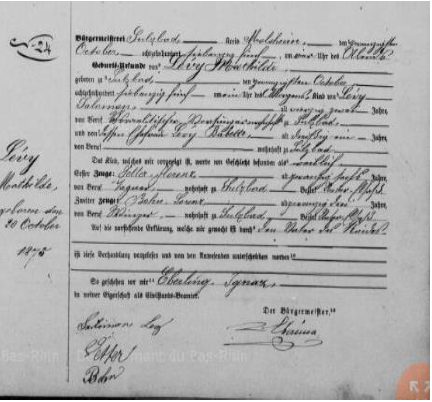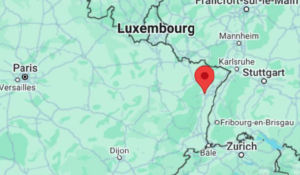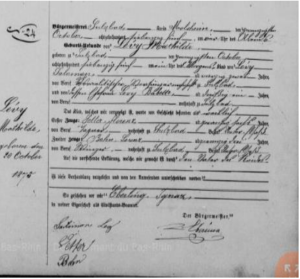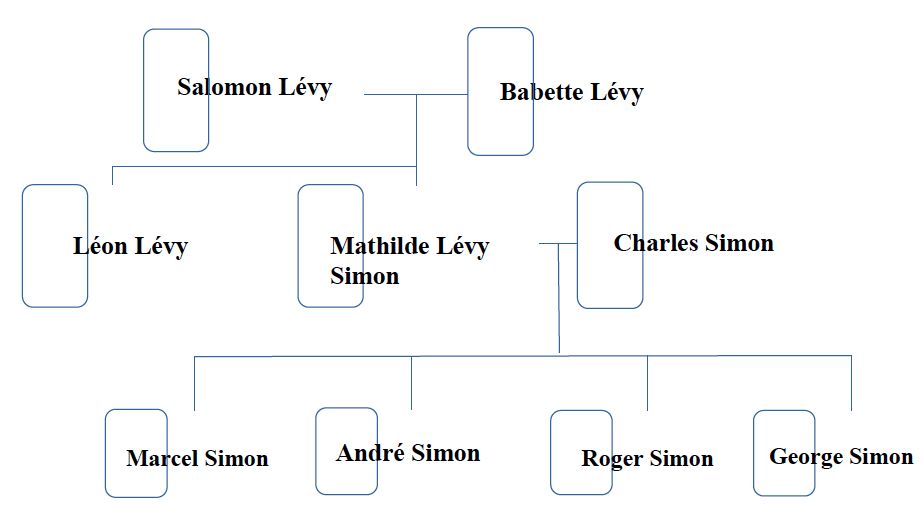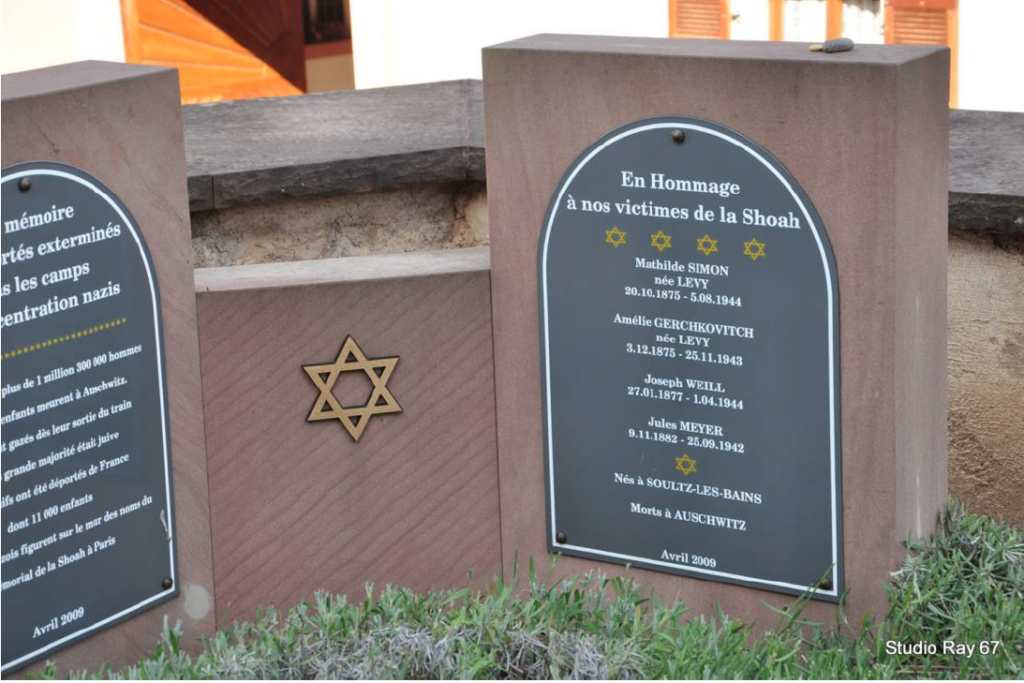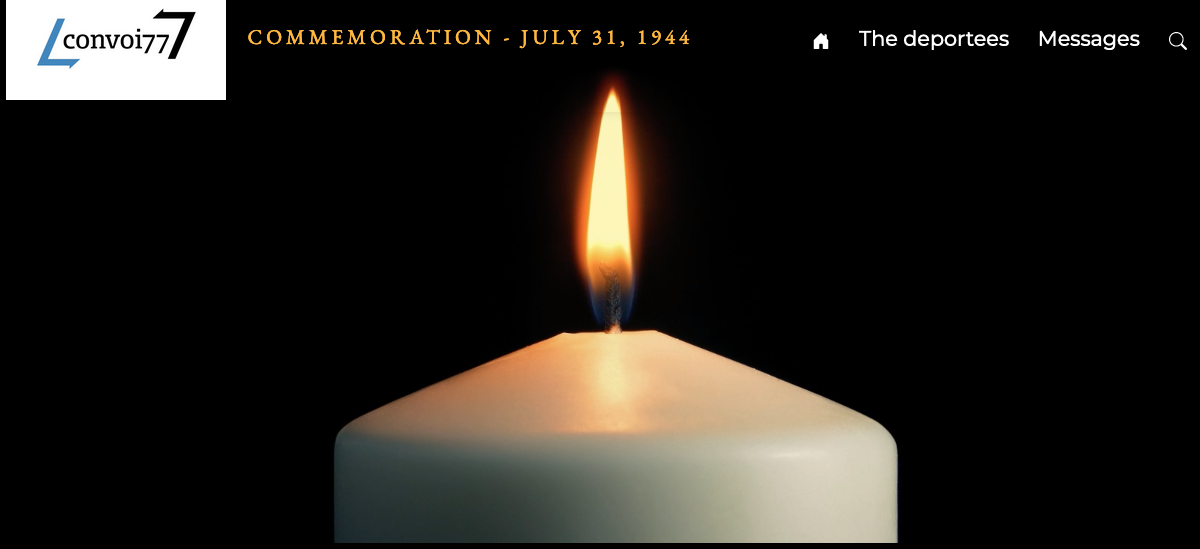Mathilde SIMON
We are Arno, Noémie, Charlotte and Emma, 9th grade students the Les Blés d’Or secondary school in Bailly-Romainvilliers in the Seine-et-Marne department of France. We worked with the support of our history and geography teacher, Ms. Garilliere and our French teacher, Ms. Jorrion. We wrote this biography as part of the Convoy 77 project. The Convoy 77 non-profit organization aims to bring together the families and friends of the people who were deported on Convoy 77 and anyone else who is interested in Holocaust remembrance. The aim of the organization is to keep alive the memory of the deportees, to tell their stories and to help pass on the memory of the Holocaust while also contributing to Holocaust research and education. Students from several European countries work together to write biographies of the people who were deported on Convoy 77, which was the very last or the large transports of Jews from Drancy. It set off for Auschwitz on July 31, 1944, with 1,306 men, women and children on board. When they arrived in Auschwitz-Birkenau, 836 people were sent straight to the gas chambers and 250 were sent into the camp to work.
We are going to tell you the story of Mathilde Simon, née Levy, who was one of the people who were deported on Convoy 77. Mathilde was born on October 20, 1875 in Soultz-les-Bains in Alsace, which had been part of Prussia since 1871, following the war between Prussia and France. Her birth certificate was therefore drawn up in German.
1: The Alsace region. Source: Google Maps
2: Mathilde’s birth certificate. Source: archives.bas-rhin.fr
Mathilde’s parents were Salomon and Bernadette Levy.
We were unable to find out anything about her childhood, unfortunately. Given that she was born in 1875, we can only assume that she grew up, at least from birth to the age of 18, free of discrimination. However, the Dreyfus Affair in 1894 clearly demonstrated how widespread anti-Semitism was in France as well as in Germany. We do not know when she moved from Alsace to Paris, but we imagine it was because she thought that job prospects in France, and Paris in particular, were better.
In 1902, when she was 27 years old and living at 254 Faubourg Saint-Martin in Paris, Mathilde married Charles Simon. He worked in sales and she was a housewife at the time. She and Charles had four children together, four boys to be exact: Marcel, who was born on March 25, 1903, André, born on November 30, 1905, Roger, born on December 3, 1907, and George, born on October 13, 1911.
There is a record at the Shoah Memorial that reveals that Mathilde and her husband later opened a bookstore. We were able to view the document during our visit to the memorial. Their turnover was quite reasonable in the pre-war years.
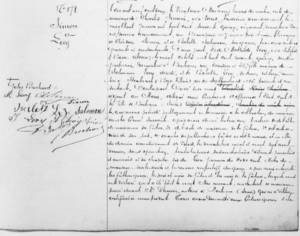
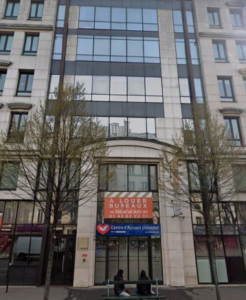
Charles and Mathilde’s marriage certificate. Source: archives.paris.fr/r/123/archives-numerisees
Photo: 254 rue Faubourg-Saint-Martin (today). Source: Google Maps
During the Second World War, Mathilde was subjected to anti-Semitic abuse, as were all Jewish people. It probably began in October 1940, when a decree was enacted on the status of the Jews. They were banned from working in various professions and Jewish-owned businesses and stores were “Aryanized”, which meant that they had to be taken over by someone who was not Jewish. There were also other war-related difficulties, such as rationing and shortages. The new rules meant that Jews had to do their shopping outside normal hours (before 6 a.m. and after 8 p.m.), when there was hardly anything left. They were also or banned from public parks, forbidden from studying certain subjects, and so on. On top of all this, in the spring of 1942, Jews were obliged to wear the yellow star on their clothing when out on the street. According to a document from the Shoah Memorial, Mathilde and Charles were forced to sell their business for a ridiculously low price in 1943. They continued to live above the bookshop but were no longer able to run it.
Mathilde, her husband and her son were arrested on July 20, 1944, supposedly because they were involved in anti-Nazi propaganda. The reason for their arrest is unclear, but it seems to have been because they still had to go through the store to get in and out their apartment, which was against the rules. They were then sent to the Drancy camp, north of Paris, where people were interned prior to being deported. The family was separated when they arrived in Drancy: the men were on the fifth floor and Mathilde sent to a room on the third floor on staircase 18.
Mathilde was deported early in the morning of July 31, 1944: she and the other deportees were taken by bus to Bobigny station, where they were loaded into cattle cars. The train, with 1303 people on board, including Mathilde, her husband and her son Marcel, then set off for Auschwitz-Birkenau. We do not know if she travelled alone or with her husband and son. Conditions on the journey were atrocious: the prisoners were crammed tightly together, with no water or toilets. The journey lasted three days and three nights, until they finally arrived at the ramp in Birkenau in the early hours of the morning, where the selection process took place immediately.
Sadly, Mathilde almost certainly died during the journey or soon after she arrived. At the age of 68, she would not have been selected to go into the concentration camp to work. Even if she did survive the journey, she would have been sent to her death in the gas chambers.
After the war ended, her son André asked the French authorities to research what had happened to his parents and brother. Mathilde’s name is on a tombstone, but it is purely symbolic, as her body is not in the grave, which is grave number 196 in the cemetery on Boulevard de la Villette in Paris.
The residents of Soultz-Les-Bains, Mathilde’s birthplace, have recently erected a memorial in honor of the five deportees who were born in the town. Mathilde is among them and her name is engraved one of the stones.
Photo kindly provided by a member of the Alsace and Lorraine Judaism website who we contacted via Facebook. The photo, which was taken from a different angle and features some of the members of the association, was published in the French newspaper Dernières Nouvelles d’Alsace on February 2, 2023.


 Français
Français Polski
Polski